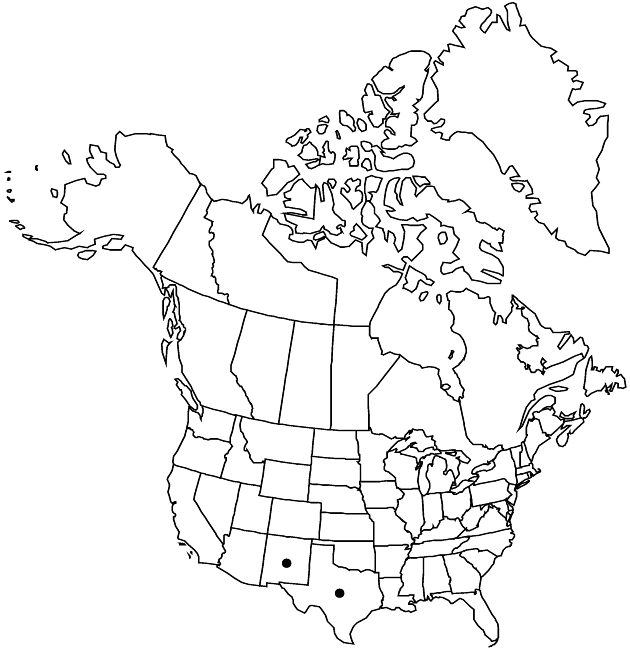Bahia pedata
Smithsonian Contr. Knowl. 3(5): 123. 1852.
Annuals or biennials, 15–70(–120+) cm. Stems mostly erect. Leaves all or mostly alternate (proximalmost sometimes opposite); blades simple or 1–2-ternately lobed, lobes ovate or obovate to lanceolate or oblanceolate, 2–25 × 1–6(–8) mm, faces sparsely scabrellous, usually gland-dotted as well. Involucres 4–6+ × 8–12+ mm. Ray florets 10–15; corolla laminae 5–6(–10+) mm. Disc florets 40–80+; corollas 3–3.5 mm. Cypselae 2.5–3.5+ mm, faces ± hirtellous; pappi of ± spatulate to oblanceolate, apically ± muticous scales 1–1.5 mm. 2n = 24.
Phenology: Flowering (May–)Jul–Aug(–Nov).
Habitat: Sandy soils, limestone, openings in grasslands and pinyon-juniper woodlands
Elevation: 900–2000 m
Distribution
Loading map...

N.Mex., Tex., Mexico (Chihuahua, Coahuila).
Discussion
Selected References
None.
Lower Taxa
None.